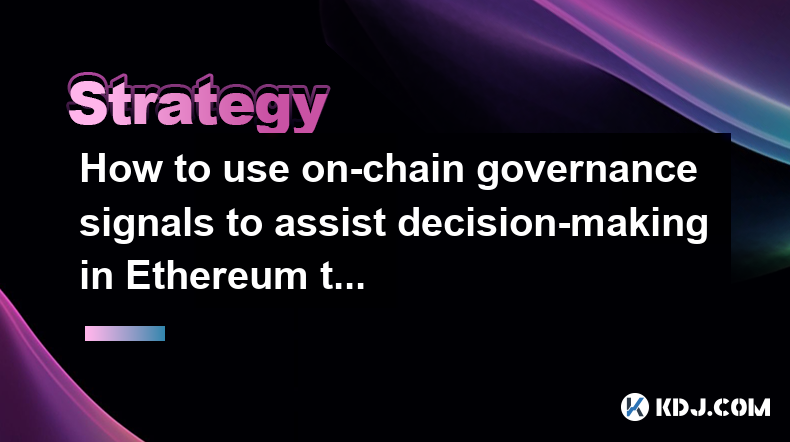-
 Bitcoin
Bitcoin $92,358.2066
-3.78% -
 Ethereum
Ethereum $2,514.7602
-9.86% -
 Tether USDt
Tether USDt $0.9997
-0.05% -
 XRP
XRP $2.3198
-9.01% -
 BNB
BNB $615.1517
-5.58% -
 Solana
Solana $141.5976
-13.50% -
 USDC
USDC $0.9999
0.00% -
 Dogecoin
Dogecoin $0.2129
-10.09% -
 Cardano
Cardano $0.6902
-9.30% -
 TRON
TRON $0.2423
-1.03% -
 Chainlink
Chainlink $15.3578
-11.56% -
 Stellar
Stellar $0.3026
-7.89% -
 Avalanche
Avalanche $21.9097
-10.49% -
 Sui
Sui $2.8963
-13.71% -
 Litecoin
Litecoin $116.0955
-8.81% -
 Toncoin
Toncoin $3.4452
-8.48% -
 Hedera
Hedera $0.1998
-4.22% -
 Shiba Inu
Shiba Inu $0.0...01392
-8.66% -
 UNUS SED LEO
UNUS SED LEO $8.8000
-9.83% -
 MANTRA
MANTRA $8.2347
-1.71% -
 Polkadot
Polkadot $4.4422
-9.05% -
 Hyperliquid
Hyperliquid $19.7104
-13.10% -
 Ethena USDe
Ethena USDe $0.9999
-0.03% -
 Bitcoin Cash
Bitcoin Cash $296.1569
-8.43% -
 Bitget Token
Bitget Token $4.7267
-6.13% -
 Dai
Dai $0.9998
-0.02% -
 Uniswap
Uniswap $8.0773
-9.39% -
 Monero
Monero $230.9033
-2.23% -
 NEAR Protocol
NEAR Protocol $3.0560
-9.30% -
 Bittensor
Bittensor $404.0531
-4.16%
Prediction rules of currency trading band skills
Currency trading bands, influenced by fundamental factors and technical indicators, provide guidelines for trend analysis, reversal identification, and entry/exit strategies.
Jan 08, 2025 at 04:52 pm

Key Points:
- Understanding Currency Trading Bands
- Fundamental Factors Influencing Currency Bands
- Technical Indicators for Band Prediction
- Trading Strategies Utilizing Currency Bands
- Risk Management for Currency Band Trading
- FAQs on Currency Trading Band Skills
Understanding Currency Trading Bands
Currency trading bands represent predefined ranges within which exchange rates tend to fluctuate. These bands can be calculated using various methods, including the Bollinger Bands, Donchian Channels, and Keltner Channels. Traders utilize these bands to assess trend strength, identify potential reversal points, and determine optimal entry and exit levels for currency trades.
Fundamental Factors Influencing Currency Bands
Fundamental factors play a significant role in determining the boundaries of currency trading bands. These factors include:
- Economic growth: Strong economic growth generally leads to currency appreciation.
- Interest rates: Higher interest rates increase the demand for currency, resulting in appreciation.
- Inflation: High inflation erodes purchasing power and weakens the value of a currency.
- Political stability: Stable governments and policies foster currency stability.
- Fiscal policy: Expansionary fiscal policies can lead to currency depreciation.
Technical Indicators for Band Prediction
Technical indicators provide valuable insights into the behavior of currency pairs within trading bands. Some commonly used indicators include:
- Bollinger Bands (BB): BB consists of three bands – an upper band, a lower band, and a moving average. When the price touches the upper (lower) band, it may indicate overbought (oversold) conditions.
- Donchian Channels (DC): DC are constructed using the highest and lowest prices over a specific period. Trends are identified when the price moves above or below these channels.
- Keltner Channels (KC): KC are similar to BB but also incorporate Average True Range (ATR) to adjust the width of the channels based on volatility. This helps identify potential breakout zones.
Trading Strategies Utilizing Currency Bands
Various trading strategies leverage currency trading bands to capture market movements. Some popular strategies include:
- Breakout trading: Traders wait for the price to break above or below a band and then enter a trade in the direction of the breakout.
- Band reversal trading: Traders anticipate a reversal when the price approaches the upper or lower band and enter a trade accordingly.
- Range trading: Traders seek to profit from price movements within a well-defined band by buying near the lower end and selling near the upper end.
Risk Management for Currency Band Trading
Effective risk management is crucial in currency band trading. Traders should consider:
- Position sizing: Determine an appropriate position size based on account balance and risk tolerance.
- Stop-loss placement: Place stop-loss orders at predetermined levels outside the trading band to limit potential losses.
- Risk-to-reward ratio: Ensure the potential profit from a trade outweighs the potential loss.
FAQs on Currency Trading Band Skills
Q: What is the difference between Bollinger Bands, Donchian Channels, and Keltner Channels?
A: Bollinger Bands use a moving average as the middle band while Donchian Channels use the highest and lowest prices. Keltner Channels combine the principles of BB and DC by incorporating a moving average and ATR.
Q: How can I identify overbought or oversold conditions using currency bands?
A: When the price touches or exceeds the upper band, it may indicate overbought conditions, while touching or falling below the lower band may suggest oversold conditions.
Q: Is it always profitable to trade breakouts from currency bands?
A: Not necessarily. False breakouts can occur, and proper risk management is essential to avoid significant losses.
Q: How can technical indicators help in currency band trading?
A: Indicators like BB, DC, and KC provide insights into trend strength, potential reversal points, and volatility, which can assist in making informed trading decisions.
Q: What is the importance of risk management in currency band trading?
A: Effective risk management helps mitigate potential losses and ensure that trades align with the trader's risk tolerance and account capital.
Disclaimer:info@kdj.com
The information provided is not trading advice. kdj.com does not assume any responsibility for any investments made based on the information provided in this article. Cryptocurrencies are highly volatile and it is highly recommended that you invest with caution after thorough research!
If you believe that the content used on this website infringes your copyright, please contact us immediately (info@kdj.com) and we will delete it promptly.
- Bitfinex Alpha Report—Crypto Market Contraction Deepens With Inflation, Policy Risks in Focus
- 2025-02-25 10:00:28
- DTX Exchange (DTX) Revolutionizing Online Trading Industry
- 2025-02-25 10:00:28
- Which Is The Top Crypto For 2025? ETH, BNB, or BDAG?
- 2025-02-25 10:00:28
- XRP and PlutoChain ($PLUTO) Could Be Your Chance to Cash In – Here's What You Should Know
- 2025-02-25 10:00:28
- USDC and EURC Join Dubai’s Approved Crypto List
- 2025-02-25 10:00:28
- Bitcoin ETPs Bear the Brunt of the Sell-Off as Altcoin ETPs Attract New Money
- 2025-02-25 10:00:28
Related knowledge

How to utilize long-short hedging strategies in Ethereum trading?
Feb 25,2025 at 09:07am
Key Points:Understand the concept of long-short hedgingChoose appropriate assets for long and short positionsManage risk and leverageMonitor positions and adjust as neededExplore advanced strategiesHow to Utilize Long-Short Hedging Strategies in Ethereum Trading:1. Comprehend Long-Short HedgingLong-short hedging involves simultaneously holding opposite ...

How to use on-chain governance signals to assist decision-making in Ethereum transactions?
Feb 25,2025 at 07:06am
Key PointsOn-chain governance signals allow individuals to participate and influence the decision-making process of Ethereum-related projects and protocols.These signals help users make more informed decisions, especially when performing complex transactions involving Ethereum or dealing with advanced protocols like decentralized exchanges.Monitoring on...

How to deal with black swan events in Ethereum trading?
Feb 25,2025 at 05:18am
Key Points:Understand the nature and characteristics of black swan eventsImplement risk management strategies to mitigate potential lossesEmploy advanced trading techniques to exploit market fluctuationsStay informed and adaptable to evolving market conditionsLeverage social media and community support for insights and guidanceHow to Deal with Black Swa...

How to use technical indicators to make decisions in Ethereum transactions?
Feb 25,2025 at 10:06am
Key Points:Identify market trends and price action using technical indicators.Employ moving averages to gauge price direction and support/resistance levels.Utilize Bollinger Bands to determine market volatility and potential reversals.Leverage Relative Strength Index (RSI) to measure market momentum.Implement Stochastic Oscillator to identify overbought...

What are the arbitrage strategies in Ethereum liquidity mining?
Feb 25,2025 at 10:24am
Key Points of Ethereum Liquidity Mining Arbitrage StrategiesSpot arbitrage: Exploiting price differences between Ethereum spot markets to buy low and sell highTriangle arbitrage: Capitalizing on three-way price discrepancies among Ethereum pairs to generate risk-free returnsCross-chain arbitrage: Leveraging price disparities between Ethereum and other b...

What impact does Ethereum Gas fee fluctuation have on trading strategies?
Feb 25,2025 at 06:36am
Key Points:Understand the concept of Ethereum gas fees and their impact on trading strategies.Explore the factors influencing gas fee fluctuations and their implications for traders.Identify strategies to mitigate the impact of high gas fees on trading.Understanding Ethereum Gas FeesEthereum gas fees represent the transaction costs associated with execu...

How to utilize long-short hedging strategies in Ethereum trading?
Feb 25,2025 at 09:07am
Key Points:Understand the concept of long-short hedgingChoose appropriate assets for long and short positionsManage risk and leverageMonitor positions and adjust as neededExplore advanced strategiesHow to Utilize Long-Short Hedging Strategies in Ethereum Trading:1. Comprehend Long-Short HedgingLong-short hedging involves simultaneously holding opposite ...

How to use on-chain governance signals to assist decision-making in Ethereum transactions?
Feb 25,2025 at 07:06am
Key PointsOn-chain governance signals allow individuals to participate and influence the decision-making process of Ethereum-related projects and protocols.These signals help users make more informed decisions, especially when performing complex transactions involving Ethereum or dealing with advanced protocols like decentralized exchanges.Monitoring on...

How to deal with black swan events in Ethereum trading?
Feb 25,2025 at 05:18am
Key Points:Understand the nature and characteristics of black swan eventsImplement risk management strategies to mitigate potential lossesEmploy advanced trading techniques to exploit market fluctuationsStay informed and adaptable to evolving market conditionsLeverage social media and community support for insights and guidanceHow to Deal with Black Swa...

How to use technical indicators to make decisions in Ethereum transactions?
Feb 25,2025 at 10:06am
Key Points:Identify market trends and price action using technical indicators.Employ moving averages to gauge price direction and support/resistance levels.Utilize Bollinger Bands to determine market volatility and potential reversals.Leverage Relative Strength Index (RSI) to measure market momentum.Implement Stochastic Oscillator to identify overbought...

What are the arbitrage strategies in Ethereum liquidity mining?
Feb 25,2025 at 10:24am
Key Points of Ethereum Liquidity Mining Arbitrage StrategiesSpot arbitrage: Exploiting price differences between Ethereum spot markets to buy low and sell highTriangle arbitrage: Capitalizing on three-way price discrepancies among Ethereum pairs to generate risk-free returnsCross-chain arbitrage: Leveraging price disparities between Ethereum and other b...

What impact does Ethereum Gas fee fluctuation have on trading strategies?
Feb 25,2025 at 06:36am
Key Points:Understand the concept of Ethereum gas fees and their impact on trading strategies.Explore the factors influencing gas fee fluctuations and their implications for traders.Identify strategies to mitigate the impact of high gas fees on trading.Understanding Ethereum Gas FeesEthereum gas fees represent the transaction costs associated with execu...
See all articles

















































































